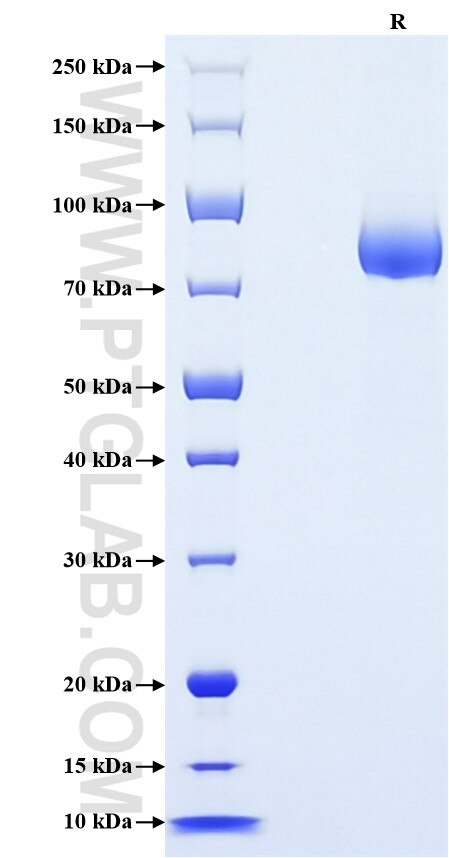Recombinant Human Siglec-6 protein (rFc Tag)
Species
Human
Purity
>90 %, SDS-PAGE
Tag
rFc Tag
Activity
not tested
Cat no : Eg2070
Validation Data Gallery
Product Information
| Purity | >90 %, SDS-PAGE |
| Endotoxin | <0.1 EU/μg protein, LAL method |
| Activity |
Not tested |
| Expression | HEK293-derived Human Siglec-6 protein Gln27-Val331 (Accession# O43699-3) with a rabbit IgG Fc tag at the C-terminus. |
| GeneID | 946 |
| Accession | O43699-3 |
| PredictedSize | 60.0 kDa |
| SDS-PAGE | 70-90 kDa, reducing (R) conditions |
| Formulation | Lyophilized from 0.22 μm filtered solution in PBS, pH 7.4. Normally 5% trehalose and 5% mannitol are added as protectants before lyophilization. |
| Reconstitution | Briefly centrifuge the tube before opening. Reconstitute at 0.1-0.5 mg/mL in sterile water. |
| Storage Conditions |
It is recommended that the protein be aliquoted for optimal storage. Avoid repeated freeze-thaw cycles.
|
| Shipping | The product is shipped at ambient temperature. Upon receipt, store it immediately at the recommended temperature. |
Background
Siglec-6, originally identified on trophoblast cells of the placenta, is highly and consistently expressed on MCs from both mucosal and non-mucosal sites. Siglec-6 consists of 3 extracellular immunoglobulin (Ig) domains and 2 intracellular immunoreceptor tyrosine-based inhibition motifs (ITIMs), closely resembling the molecular structure of Siglec-3 (CD33). Siglec-6 was recruited to placental expression during human evolution, presumably to interact with sialylated ligands for specific negative signaling functions and/or to regulate leptin availability. Siglec-6 is an immunoreceptor tyrosine-based inhibitory motif (ITIM)-bearing receptor selectively expressed by mast cells, making it a promising target for therapeutic intervention.
References:
1. Brinkman-Van der Linden EC, et al. (2007). Glycobiology. Sep;17(9):922-31. 2. Jetani H, et al. (2021). Blood. Nov 11;138(19):1830-1842. 3. Robida P. A., et al. (2022). Cell. Mar 28;11(7):1138.
